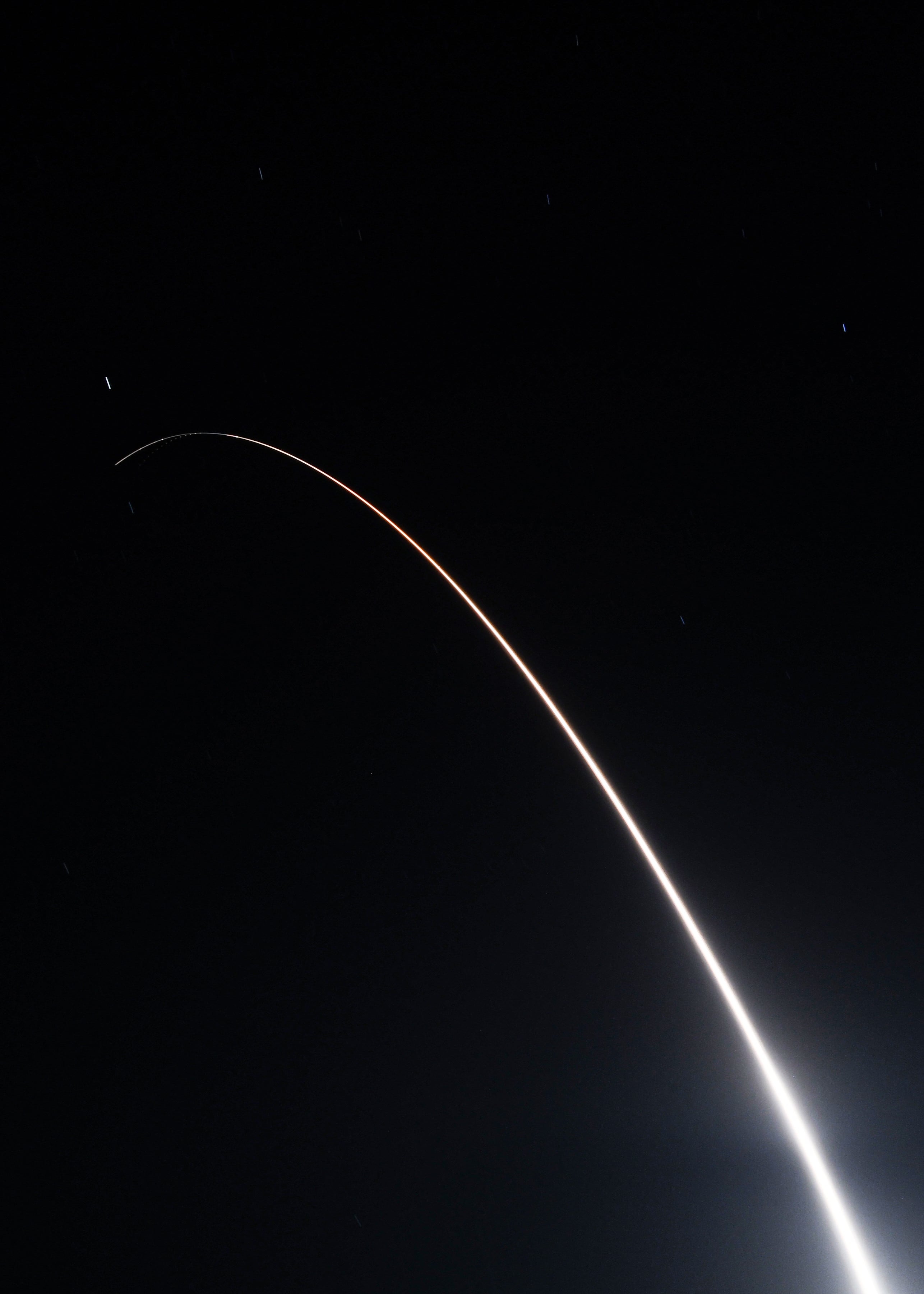Correction: This story has been updated to correct the name of Col. Chris Cruise.
WASHINGTON — The U.S. Air Force and Navy on Wednesday morning conducted a test launch of an unarmed Minuteman III intercontinental ballistic missile in California using an airborne control center.
The weapon, which contained a test reentry vehicle, was controlled from an Airborne Launch Control System in a Navy E-6B Mercury aircraft, the Air Force said in a statement.
Airmen from the 625th Strategic Operations Squadron from Offutt Air Force Base in Nebraska and Navy aircrew were aboard the E-6. Airmen from the 341st Missile Wing at Malmstrom Air Force Base in Montana also served on the task force supporting the test launch, which took place at Vandenberg Space Force Base in California.
“Strategic deterrence is the most critical mission in our Air Force and the cornerstone of America’s defense,” Air Force Global Strike Command head Gen. Thomas Bussiere said in the statement. “This test launch reinforces what our allies and partners already know: We’re always ready to defend the United States with combat-ready nuclear forces anytime, anywhere, on order, to conduct global strike.”
The Air Force said the Minuteman’s reentry vehicle traveled about 4,200 miles to the Kwajalein Atoll in the Marshall Islands.

This was the first Minuteman test since Feb. 9, and the first time a test involved the use of the airborne control center since Aug. 16. The Air Force regularly conducts unarmed ICBM tests to ensure the missiles are functioning properly, and the service said this test was not in response to current world events.
The Air Force said Wednesday’s test verified the ICBM’s accuracy and reliability, and produced data that the Defense Department, Energy Department and U.S. Strategic Command will use to ensure the military’s nuclear missile enterprise is safe and secure.
Col. Chris Cruise, commander of the 377th Test Evaluation Group, said the test of the Airborne Launch Control System validates the military’s ability to strike targets anywhere and at any time, if the president deems it necessary. The test also ensures the military has redundancy in its ability to control ICBMs and shows the Air Force’s ability to work together with the Navy, he added.
The Navy now has 16 E-6s that carry out the Navy’s TACAMO, or Take Charge and Move Out, mission, which allows top U.S. leaders, including the president, to control nuclear forces such as nuclear-armed submarines.
But the E-6 fleet is aging, and the Navy says it must replace the aircraft with a new type. Northrop Grumman, Lockheed Martin’s Skunk Works, and Raytheon Intelligence and Space are among the companies working together to bid on the E-6 replacement, now referred to as E-XX.
Northrop Grumman officials told reporters at the Navy League’s Sea-Air-Space conference on April 3 that the Navy wants the E-XX to be a modified C-130J-30 Super Hercules, which has an extra 15 feet in its fuselage.
The Air Force and Northrop Grumman are also developing a successor to the Minuteman III, the LGM-35A Sentinel, which is expected to reach initial operational capability in 2029. The Air Force said it will keep operating the Minuteman III until the Sentinel reaches full capability in the mid-2030s.
Stephen Losey is the air warfare reporter for Defense News. He previously covered leadership and personnel issues at Air Force Times, and the Pentagon, special operations and air warfare at Military.com. He has traveled to the Middle East to cover U.S. Air Force operations.




